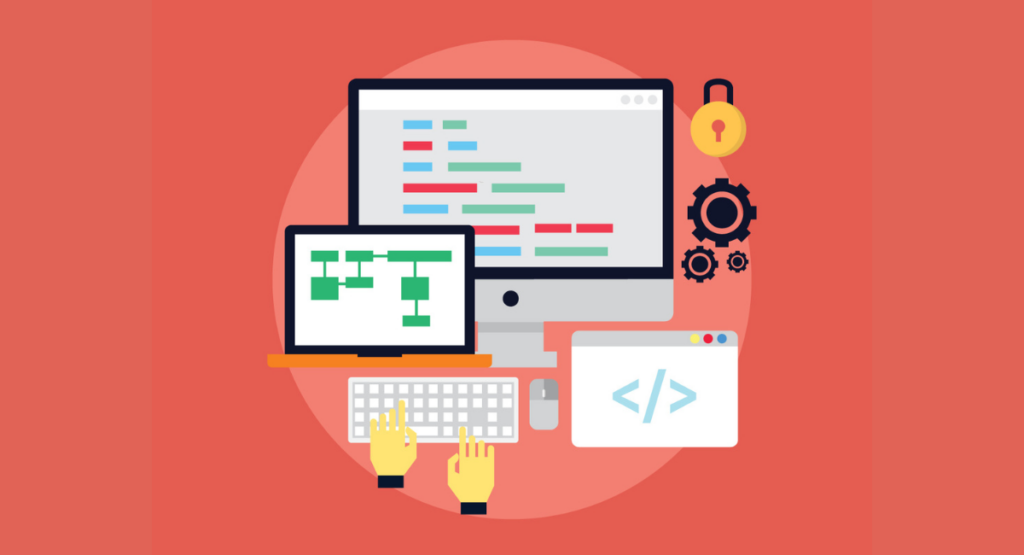Xcode is Apple's integrated development environment for making apps for its ecosystem: macOS, iOS, iPadOS, watchOS, and tvOS.
Developed by Apple Inc, Xcode pulls together a far-reaching suite of software development tools; the ones most famous are the IDE itself, the Interface Builder, and the coding and testing tools.
Whether you are a fresher who wants to get your feet wet in app development or a veteran developer who wants to fine-tune their very latest app.
The thing that matters and keeps you going is the fast download and installation of Xcode on Mac, along with timely updates. This guide will walk you through the process of making sure you have the latest tools at hand.
Downloading Xcode on Mac

System requirements for Xcode
First, make sure your Mac meets the minimum system requirements to download Xcode. It only needs macOS Monterey 12.4 or later.
Your Mac needs at least 36GB of free storage for installing Xcode, though it is recommended to have 50GB or more for better performance.
You also need a stable internet connection that will not shut down during the download process in order to not disrupt the process.
Step-by-step guide to downloading Xcode from the Mac App Store
To download Xcode, follow these detailed steps:
1. Open the App Store on your Mac.
2. There is a search button in the top-left corner of the App Store. Press it, and type Xcode. Then press enter.
3. You should see an app called Xcode listed under the first search result. Click on it.
4. After you will have clicked on Xcode, just click the blue 'Get' button further click 'Install App'.
5. You will be prompted either for your Apple ID password or to use Touch ID, if your Mac is equipped with it. This authenticates to start the download.
6. As this can be a very large download, often measured in gigabytes, it may take some time based on your connection.
7. After the download finishes, the installer opens by itself. If it fails to do so, you shall locate Xcode in your 'Applications' folder.
Installing Xcode on Mac
Preparation steps before installation
Before one can install Xcode, it is always a good idea to do a couple of preparation steps before that for a smooth installation process to take place:
- Backup Important Data: Always make sure to back up your Mac using Time Machine or any other backup software before major installations.
- Ensure Sufficient Space: Make sure you have a minimum of 50GB of free storage space to avoid installation issues.
- Update macOS: Make sure that your version of macOS is at a position where it will support the very latest version of Xcode.
- Close Unnecessary Apps: All apps which are running and not needed should be closed to free system resources and avoid any potential conflicts during installation.
Step-by-step guide to installing Xcode on your Mac
After downloading Xcode from the Mac App Store, follow these steps to install it on your Mac:
1. Locate Xcode through the 'Applications' folder or using Spotlight, Command + Space, and type in 'Xcode.'
2. Double-click the icon for Xcode. You very likely will get an install additional components prompt for an administrator password.
3. Type in your password; click 'Install.' The required components will be installed by Xcode.
4. This might take a minute or two. It's dependent on your system's speed and your internet connection, as some parts may need to download.
5. Open it now, either from the Applications directory or by searching for it with Spotlight.
6. When you open Xcode for the first time, you will likely be presented with terms and conditions which you will have to agree to, and further items will install. Just follow the on-screen instructions now.
Following these steps will ensure you have properly installed Xcode on your Mac and are ready to start creating some really powerful applications.
Make sure to follow all requirements and steps designed in order to bypass common mistakes while installing software that hasn't been properly installed.
Updating Xcode on Mac

Importance of staying up-to-date with Xcode versions
Since new versions of macOS and iOS appear frequently, it means Apple has to update its development tool, Xcode, to provide better compatibility and features.
For a developer to successfully accomplish a lot, keeping up with the latest version of Xcode is important, as this includes some important bug fixes with regard to performance improvement and gives access to the latest features for easy and advanced development of apps.
Furthermore, the ultra-newest ones allow the creation of apps for the newest versions of iOS, macOS, watchOS, and tvOS; this way, all the newest hardware and software features are available for your apps.
Step-by-step guide to updating Xcode on your Mac
Simply follow these simple steps to conveniently upgrade Xcode on your Mac:
1. Open App Store: Open the App Store on a Mac. You can find it in the Dock or in your Applications folder.
2. Search for Xcode: On the App Store top left, there is a search field; enter the text "Xcode" and press Enter, which will bring up the Xcode page.
3. Check for Updates: On the left side of the App Store, click the "Updates" tab. If an update for XPRcode is available, it will be there.
4. Update Xcode: If an update is available, next to Xcode, click "Update". That will start downloading and installing. Depending on your internet connection, this might take some time because it is such a big application.
5. Open Xcode: When the update is done, you can open the Application from the Applications folder in Xcode. You should reboot your Mac after updating the integral software like Xcode to complete the update so that all of its components and services run correctly.
If you have installed the latest available update of Xcode, your development flow will get much smoother and faster, and you would stay compatible with Apple's newest developer tools and technologies.
Book a Demo and experience ContextQA testing platform in action with a complimentary, no-obligation session tailored to your business needs.
Conclusion
Concluding, managing Xcode on your Mac involves a sequence of straightforward steps whether you are downloading, installing, or updating the application.
Start by navigating to the App Store for initial downloads and installations, ensuring that your system meets the necessary requirements.
For updates, regularly check the App Store or enable automatic updates to keep your development environment up to date, leveraging the latest tools and features provided by Apple.
By following these procedures, you can maintain an efficient and current development setup on your Mac.
Also Read - Opera Browser Testing on Real Devices, no VMs
